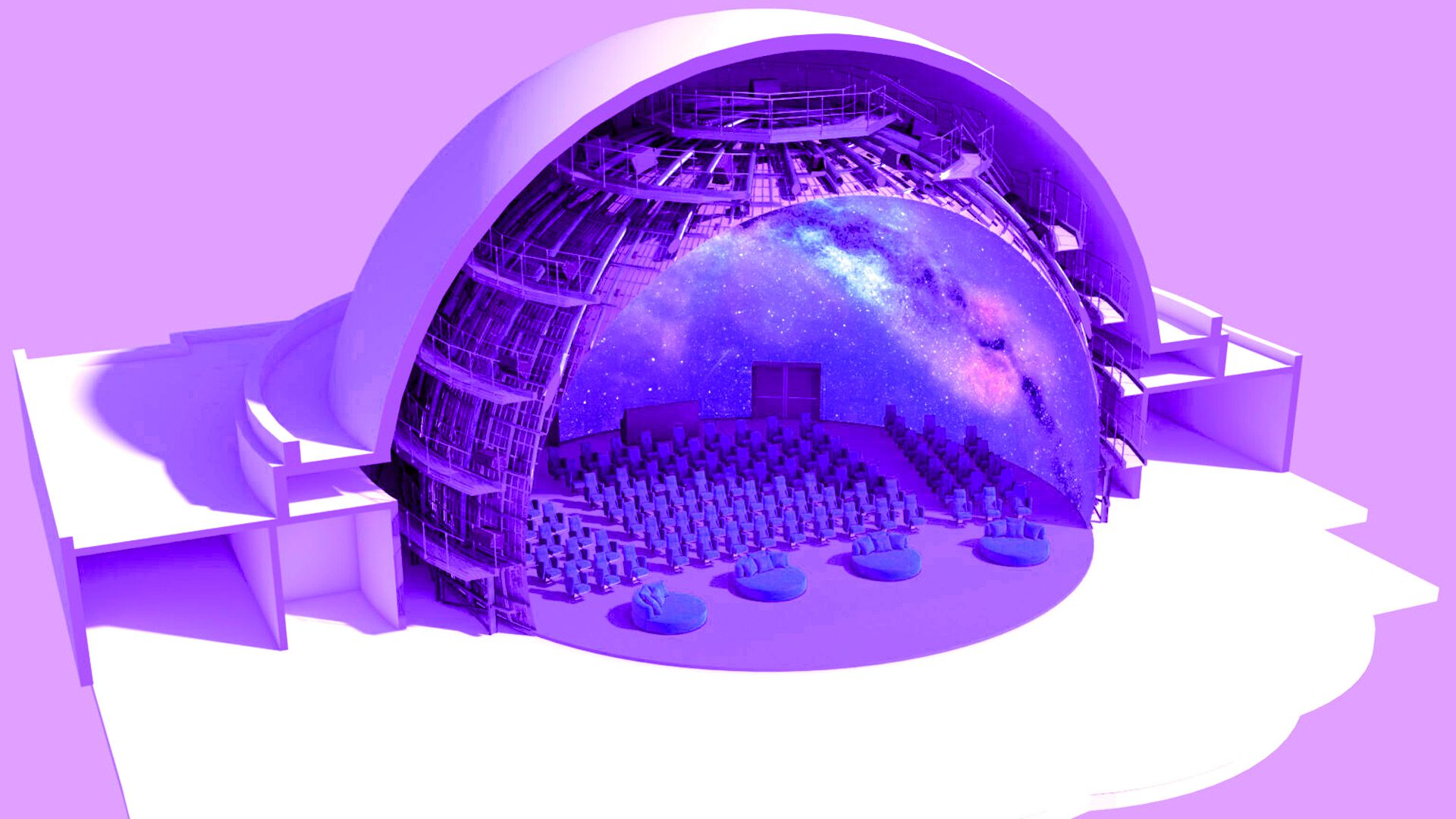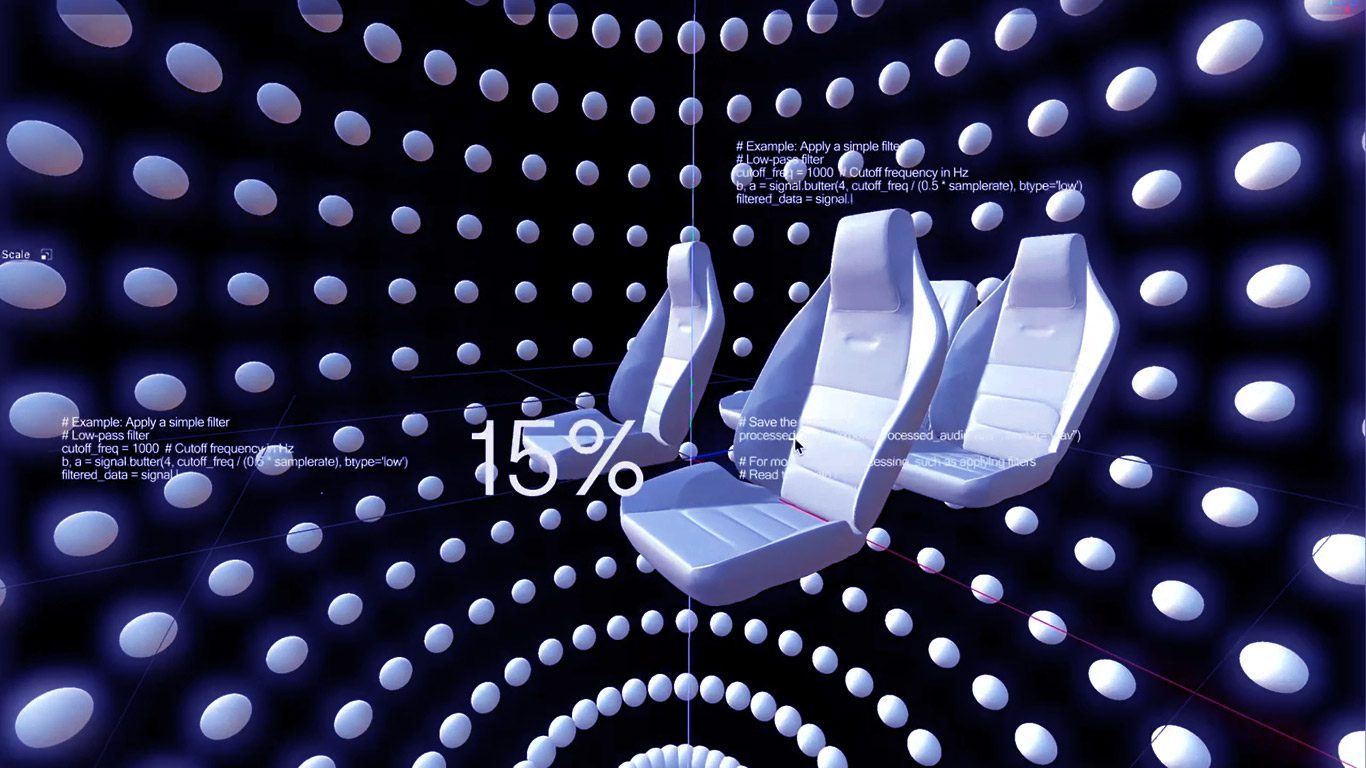In the world of immersive audio, the debate over whether binaural audio is an inferior technology compared to speaker-based audio spatialization systems remains relevant. Some argue that the true sense of immersion can only be achieved with well-calibrated speakers, as the sound not only affects the ears but is also felt throughout the body through the acoustic pressure in the air. From this perspective, binaural audio is seen as a limited version that attempts to emulate (and not necessarily replicate) the immersion provided by speakers.
However, this physical approach to immersion overlooks fundamental aspects, as sound immersion does not solely depend on the physical pressure of sound, but also on how the brain perceives and processes auditory information.
Is it possible for binaural audio to offer a different yet equally valid form of immersion? Instead of imitating physical reality, can we create a new type of virtual sound space that doesn’t aim to replicate the physical, but rather to construct distinctive experiences?
Binaural audio has evolved from an experimental technology into a commonly used tool in immersive experiences, yet it still faces the challenge of changing perceptions about its value, both in professional settings and among the general public. Although it is widely used in applications such as virtual reality (VR), video games, and immersive recordings, it remains unknown to many. The key to increasing its accessibility lies in raising awareness of its importance: binaural audio simulates how humans perceive sound in the real world through two audio channels. By doing so, it creates an immersive experience that allows the listener to feel physically present in an environment, interacting with sounds coming from different directions.
Although technical terms like ITD (Interaural Time Difference), ILD (Interaural Level Difference), and HRTF (Head-Related Transfer Functions) are essential for audio professionals, it is important to promote clearer and more accessible communication for those who wish to experience these technologies without feeling intimidated.
Immersive Audio: Speakers or Headphones? What’s the Real Difference?
The way we experience sound varies significantly depending on the technology we use to reproduce it. In the field of audio spatialization, both speakers and headphones provide exceptional experiences, but in very different ways, each with its own advantages and limitations.
Total Immersion with Speakers: A Physical Approach
Well-positioned speaker systems create an immersive spatial experience that affects not only the ears but the entire body. These systems, such as multichannel or 3D setups, distribute sound throughout the space in a way that allows the listener to clearly perceive not only the direction of the sound but also its distance and height. The acoustic pressure and vibrations generated create a deep immersion that interacts with the physical environment. However, these systems are costly, requiring amplifiers, specialized signal processors, and an appropriate space for proper installation and calibration.
Headphones: A Personalized Experience
Although headphones do not provide the same physical interaction as speakers, their ability to create an immersive experience should not be underestimated. The sound is directly perceived in the ear canal, which limits the body’s interaction with the surrounding space. Unlike speaker systems, which allow sound to bounce off surfaces and propagate throughout the environment, headphones do not generate changes in acoustic pressure or physical vibrations that can be detected in other parts of the body. However, the auditory experience they offer remains profound, as the perception of spatiality and sound direction is still noticeable through the use of binaural technology.
One of the major benefits of headphones is their accessibility. They are easy to obtain, affordable, and do not require complex infrastructure or a specific space. This makes them an ideal option for those looking to experience audio spatialization without the need for expensive equipment or a controlled environment. Although the quality of the binaural experience depends on various factors, such as the recording and the playback device, recent technological advancements have significantly improved the fidelity and detail of the experience.
Is Binaural Audio a "Degraded" Spatial Sound?
One argument against binaural audio is that it is considered a limited or “degraded” version of immersive sound compared to a multichannel or 3D system. However, this perception is based on the misconception that binaural audio aims to replicate the sound of a physical space with speakers. In reality, binaural audio creates its own virtual sound space with distinct rules.
Audio immersion does not rely solely on the physics of sound, but also on auditory perception and sound design. Through headphones, binaural audio not only recreates the three-dimensionality of sound in the real world, but also allows for the design of sound environments that could not exist physically. Similarly to cinema, which does not attempt to replicate human vision exactly, binaural audio uses its own tools to create a unique immersive experience.
Far from being an inferior version, binaural audio is a valid and accessible alternative for creating immersive experiences, with the potential to offer innovative and creative sound experiences. Additionally, we must differentiate between binaural recordings and binaural panning.
Binaural Recording vs. Binaural Panning
Binaural recording uses special microphones placed in an artificial head or in a person’s ears, capturing sound as it would be perceived by a human in a real environment. This process preserves natural spatial cues, such as the time and level differences between the ears (ITD and ILD) and the modifications caused by the shape of the head and outer ear (HRTF).
On the other hand, binaural panning is a sound design process where conventional sounds are positioned in a three-dimensional space using algorithms that simulate binaural perception. This technique offers greater creative flexibility, allowing for the construction of sound environments that do not rely on live recordings, but rather on spatial synthesis.
Both techniques have complementary applications, ranging from realistic documentation with binaural recordings to the creation of impossible sound worlds through binaural panning.
Innovación en el Uso del Audio Binaural
One of the most fascinating areas of this technology is its application in sound narrative design. I have worked on several projects where binaural audio not only creates a sense of presence but also establishes a deep emotional connection with the listener. From sound art pieces to virtual reality experiences, binaural audio emerges as a powerful tool for creating immersive stories. Artists, designers, and producers now have the ability to build sound worlds that are both immersive and sensorially complex.
This technology is also being increasingly used in education and medicine. For example, in therapies aimed at reducing stress or improving concentration, binaural audio has been used to create relaxing sound environments. Advances in creating personalized sound experiences allow, for instance, listeners to adjust the sound according to their preferences or needs, making binaural audio an inclusive tool.
Accessibility and Creative Transformation
For immersive audio to become truly accessible, it is essential to advance the development of editing and production techniques that maximize its potential without relying on expensive systems. Today, there are advanced tools that allow for the creation of spatial sound experiences without the need for significant investments in hardware. This means that, as these tools evolve, it becomes easier to experiment with spatialized audio without requiring a highly specialized production environment.
The future of immersive audio also depends on a shift in mindset among us as creators. Instead of viewing binaural technology as an “inferior” alternative to systems that require speakers, we should approach it as a medium with its own language and possibilities.
Through creative approaches and new sound design techniques, it is possible to develop immersive narratives that make the most of binaural audio’s capabilities, expanding the horizons of what is possible in the sound experience. This shift in perspective also offers the industry the opportunity not only to create immersive experiences but to foster a deeper and more specific understanding among users of audio spatialization tools, just as has happened with visual technologies, where the general public is increasingly becoming aware of the production methods behind what is seen on camera.
In the visual realm, consumers are drawn to image quality, a value that is culturally ingrained. However, in sound, this is not as evident, except in specific niches like audiophiles. How can we change this? Binaural audio can be an entry point to expand knowledge about sound spatialization among users.
ASMR videos on YouTube took the first step by capturing the audience’s attention with very specific sounds that triggered sensations, but their impact has diminished over time. The key now lies in how to maintain the public’s interest in immersive audio and show that, in these experiences, sound is not just a complement but an essential driver to create a deep connection and a truly immersive experience.
The audiovisual industry is revolutionizing the way we consume stories, and sound is a key part of this transformation. At the same time, production techniques are undergoing a radical change. Expanding production capabilities beyond specific niches and allowing professionals from various sectors—not just entertainment but also information, education, automotive, among others—to have access to the right tools and knowledge about audio is crucial for the sustainable development of the audio industry in the coming years. This access will define the future of content, tools, professions, and listening experiences that lie ahead.
As a professional with over a decade of experience in creating immersive sound experiences, I have worked with multichannel and binaural audio technology on a variety of projects. My work has focused on researching how sound can be spatialized to enhance immersion in narratives, and I have developed pieces that explore the interaction between humans and virtual space through sound. Along the way, I have had the opportunity to collaborate with various teams and explore new ways of applying binaural audio in different contexts, which has allowed me to delve deeper into its artistic and functional potential.
It is clear that the future of binaural audio is full of possibilities. While the technology continues to evolve, it is essential that both professionals and the general public understand its true impact and actively engage in its development. Accessibility and the simplification of concepts are key to encouraging more people to integrate this technology into their projects, thereby enriching the sound experience across various fields.



